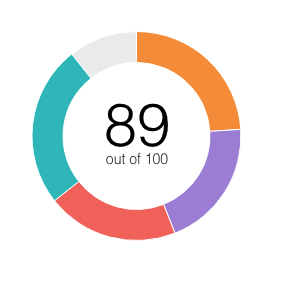The debate about cold calling wages on.
Many feel it’s a powerful way to build a book of business.
Many feel it’s a total waste of time.
I feel cold calling is like the old-fashioned chalkboard. We can still use it, but why would you since now we have whiteboards and even better, we have smartboards.
I refuse to use a chalkboard, except if I want to show my Grandkids what they are. I like whiteboards and even have one in my office. I use it now and then when I am thinking ‘out loud’. I love smartboards and use them when I have the need. I even use a smartboard app now and then when I am in a strategic conversation with a client or even with myself. Again, I don’t have a chalkboard.
Back to cold-calling. I refuse to cold call. Now, I have done my fair share of cold calling. Way back in the day. I had long lists of names, companies, and phone numbers. Eventually, we added email addresses to these lists. I was fairly successful in cold calling and cold emailing.
Today, I have better systems, technologies, and processes that help me to be more effective in reaching out to people who did not know me.
BTW, in my opinion, and for the sake of this article, cold calling as it’s called, does not include the use of these systems, tools, or processes. The moment you touch someone and they know you touched them, it’s no longer cold-calling.
Back to my processes
I have found that using numerous digital & human touches provides the best results for contacting, connecting with, and most importantly, getting into a conversation with a prospect.
Here is the YouTube video where I discuss my touchpoints prior to cold messaging on LinkedIn.
Read the touchpoints I use to make messaging to people who did not know me on LinkedIn:
- I review the LinkedIn Profile of the LinkedIn Member to find relevance and any substantial relationship between the two of us.
- I review their LinkedIn Profile, content, and engagement to find evidence they are active enough on LinkedIn to justify any further engagement or messaging thru LinkedIn.
- If they are using LinkedIn regularly, I review their activity to discover any content I can engage on with them. I make my comment relevant to their post and I tag them to ensure they are notified I joined the conversation.
If they are not active on LinkedIn, I move on to another LinkedIn Member or I continue seeking ways to engage with this LinkedIn Member outside of LinkedIn. - If I want to connect, I will then send a LinkedIn Invite referencing the content, any substantial relevance between us and I will use the words, “Please join me on LinkedIn.”
If I only want to message them on LinkedIn, I will use an InMail credit. I will start the conversation with something about the content, I’ll point out any substantial relevance and then I’ll let them know the reason I want to talk with them. It will never be an invite to a sales pitch. Typically I am seeking insights or knowledge I hope they have or know someone who does have.
LinkedIn is a human-to-human social engagement site. It is not a replacement for email for cold messaging.
BTW – I have built a Quora Space focused on getting you the answers to your LinkedIn questions faster. If you want access to me for all of your LinkedIn questions, please join my Quora Space – Master LinkedIn as a Business Tool
/Teddy




